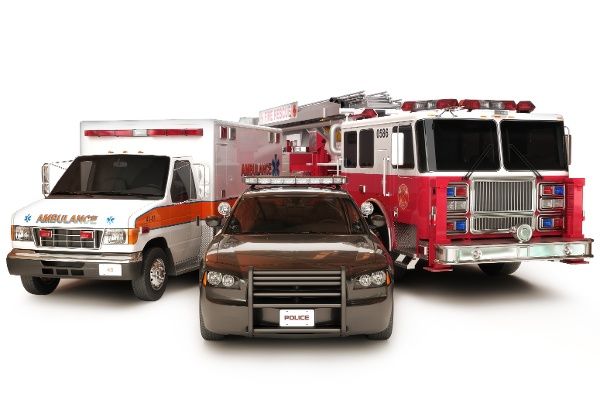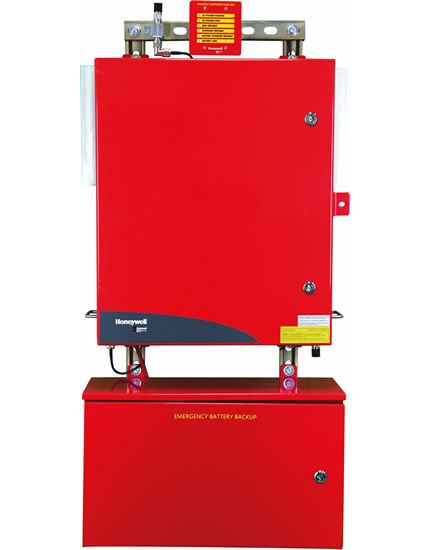BI-DIRECTIONAL
AMPLIFIER SYSTEMS
Designed to ensure consistent & uniform emergency responder communication system operation across any facility
Emergency Responders Depend of BDA Systems
Every single day, the courageous men and women who dedicate their lives to serving as law enforcement, firefighting, and EMT professionals, put themselves in harm's way to guarantee the safety of the American public. When faced with a life-threatening emergency, it is crucial that these professionals have access to efficient and dependable radio and cellular communication systems. In critical situations where time is of the essence, these systems ensure the swiftest possible responses, safeguarding the lives of both the American public and our valiant emergency responders.
Fire & Building Codes Instituted to Enhance Emergency Response
In the interest of public health, safety, and welfare, the National Fire Prevention Association (NFPA) and International Fire Code (IFC) establish codes for the protection of public health, safety, and welfare from the hazards of fire, explosion, and dangerous conditions in buildings. Beginning in 2013, the NFPA and ISC began publishing a series codes designed to ensure the availability of reliable radio communication in buildings during event an emergency. These codes outline the use of bi-direction amplifier systems to ensure strong and consistently distributed radio coverage. Today, building and fire codes in nearly all jurisdictions require Emergency Response Radio Signal (ERRS) strength and coverage be regularly measured in all new and many existing buildings.
NFPA & IFC CODE REFERENCE LINKS
NFPA 72 – 2013 | NFPA 1221 – 2016 | IFC 510 – 2015 | IFC 510 - 2018

What is a BDA?
A variety of materials used in the construction of buildings, such as glass, steel, wood, and concrete, impede and degrade the strength and consistency of radio communication signals. Bi-directional amplifiers are critical components of an Emergency Radio Communication Enhancement System (ERCES). Bi-directional amplifiers enable a building ERCES to powerfully distribute a broad range of two-way radio signals across the interior of buildings - ensuring uninterrupted communication between emergency responders both inside and outside of buildings.
DSC Services for Emergency Radio Communication Systems (ERCES)
DSC offers a comprehensive range of bi-directional amplifier services. Services include system design, engineering, training. DSC can assist in maintaining your compliance with fire and building codes with managed maintenance agreements, emergency system service, and support.
As a part of both initial site evaluations and annual inspections, DSC also offers radio signal testing and mapping. At the conclusion of this testing, DSC life safety technicians provide clients with a floor-by-floor visual “heat map” indicating radio communication strength of every area of your building - allowing for the simplified assessment your facilities BDA requirements.

DSC Bi-Directional Amplifier Systems
DSC specializes in the installation of bi-directional amplifier systems from reputable brands such as Siemens (Siemens RSI) and Honeywell. These systems are compatible with Gamewell FCI systems and the Farenhyt Series, meeting the highest quality standards in life safety systems. Both Siemens and Honeywell BDA systems are UL2524 approved and engineered to comply with major fire and building codes.
The Honeywell bi-directional amplifiers for the Gamewell FCI and Farenhyt Series seamlessly integrate with their respective fire alarm systems. These BDA solutions, classified as "Class B" BDA systems, are designed to boost signals with high-gain, high-power, and band-selective capabilities. They have been specifically developed for UL2524, NFPA, and IBC/IFC compliant in-building two-way Emergency Radio Communication Enhancement Systems.
In 2020, Siemens announced a partnership with RSI to manufacture Bi-Directional Amplifier solutions for Siemens Fire Alarm installations, including the Cerberus Pro line.
The M5 Series BDA is a revolutionary product that offers unmatched flexibility and performance for Emergency Responder Communications Enhancement Systems. This advanced product can be configured to operate on any public safety frequency band, either FCC Class A or Class B, with medium or high power options. It is compatible with both passive DAS and fiber DAS systems, providing limitless coverage capacity suitable for buildings of any size and multi-building campus applications. The M5 Series BDA, including its power supply and battery backup, is conveniently housed within a single, waterproof NEMA-4 enclosure. It is engineered to deliver optimal RF performance and designed to fully comply with NFPA, IFC, and UL2524 codes and standards. Despite its advanced capabilities, the M5 remains the most cost-effective, easy-to-install, and low-maintenance solution available on the market today.
"I've had a great experience with DSC over the past several years. They have been honest & upfront, on time and deliver a quality product. The technicians have been professional and courteous. Highly recommended."
Jeffrey W.
Satisfied Client
⭐ ⭐ ⭐ ⭐ ⭐
They are very sincere, professional and more importantly, they deliver on time and on budget.
Dwight P.
Satisfied DSC Client
Caring, loyal, and hard working employees who are eager to help customers.
Jessica B.
Satisfied DSC Client
Real, authentic, honest experts in security. The team at DSC is a pleasure to work with!
Kasey D.
Satisfied DSC Client
Ready to Talk? Schedule a Consultation Today.
Contact the security and life safety professionals at DSC today - to schedule a consultation or request a quote.
➤ Schedule Consultation
DSC Proudly Partners with the Today's Leading Manufacturers of Life Safety & Physical Security Solutions:























